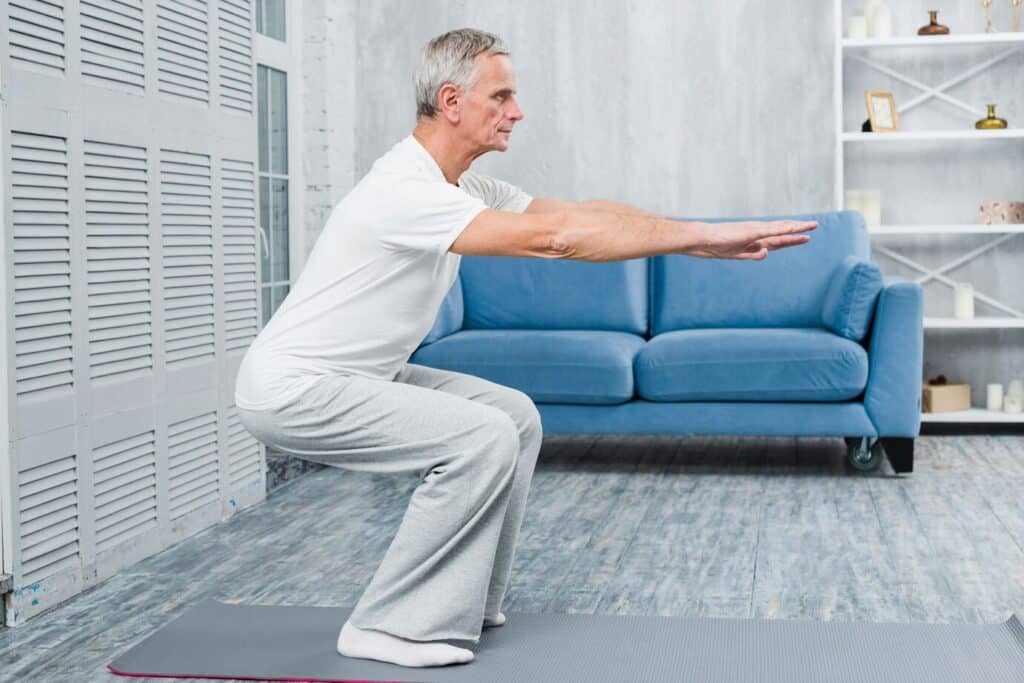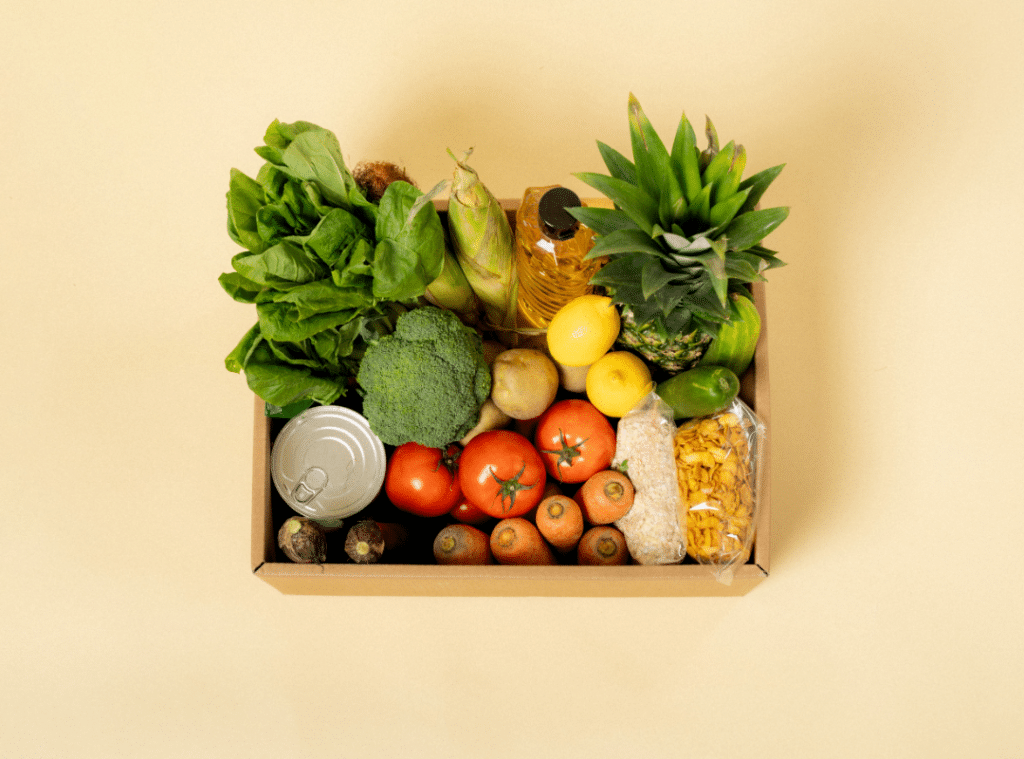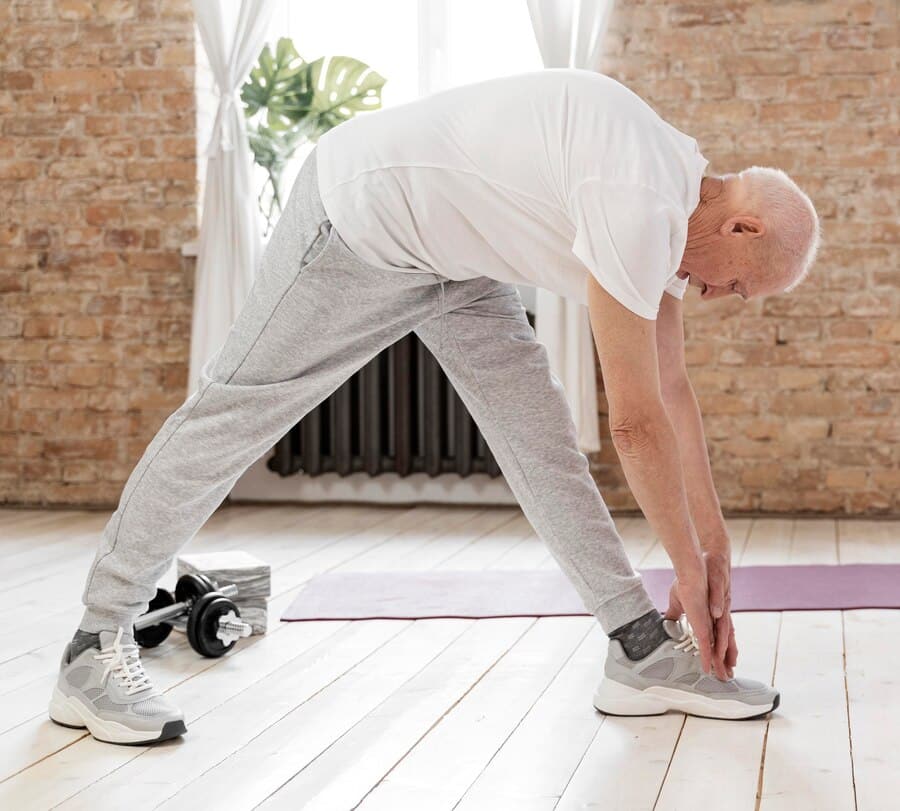Preventing Falls in Seniors: Key Tips to Ensure Their Safety
Imagine a tree swaying in the wind, its roots strong yet vulnerable to storms—such is the balance seniors must maintain to avoid falls. At Westmont of Culver City, we understand that everyday activities can pose hidden dangers, and it’s essential to recognize these risks for safety. By implementing simple strategies, you can help protect seniors from unnecessary accidents. From home modifications to physical exercises, there are numerous approaches to evaluate. But what key steps should you take to create a safer environment?
Understanding Fall Risks
How aware are you of the various factors that can increase your risk of falling? Understanding the causes of falls in seniors is vital for promoting safety and preventing injuries.
Several risk factors for falls in the elderly can greatly impact their stability. For instance, declining eyesight, hearing, and reflexes can all make traversing environments more challenging. Chronic conditions like diabetes and heart disease can further impair balance, while cognitive impairments, such as dementia, increase the likelihood of falls.
Medications that cause dizziness or confusion can also elevate this risk. Additionally, lifestyle choices like smoking and excessive alcohol consumption can weaken bones, making fractures more likely.
It’s important to recognize that osteoporosis, a condition that thins bones, poses a serious threat, especially if falls occur. Minor tumbles can lead to severe consequences for individuals with weaker bones. Regular exercise helps combat muscle weakness and improve stability, reducing the risk of falls.
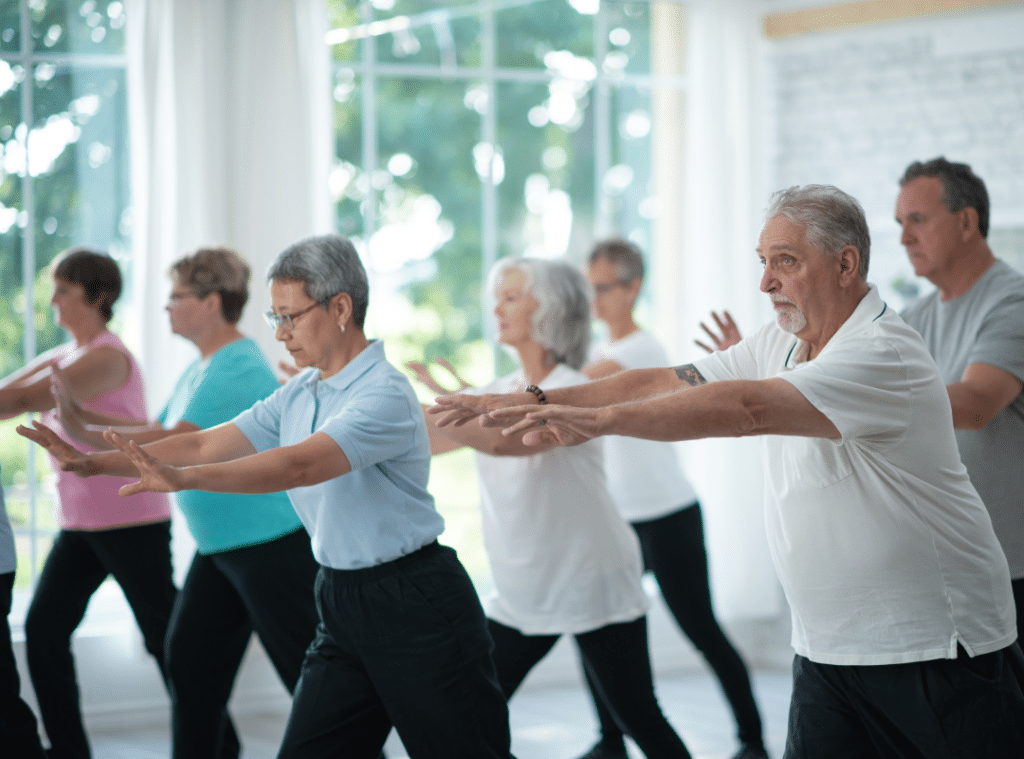
Managing Sarcopenia
Managing sarcopenia is essential for maintaining strength and reducing the causes of recurrent falls in the elderly. Regular strength training exercises can help combat this condition. Aim for at least two weekly sessions focusing on major muscle groups.
Nutrition plays a significant role in addition to exercise. To support muscle repair and growth, incorporate protein-rich foods into your meals. Lean meats, fish, eggs, and legumes are excellent choices.
Don’t underestimate the importance of staying active in daily life; simple activities like walking or gardening can enhance your strength and balance, contributing to effective fall prevention at home in the elderly. Moreover, recognizing the prevalence rates of sarcopenia (which range from 5% to 50% in those aged 60+) can guide your approach to managing this condition.
Lastly, consider working with a healthcare provider or a physical therapist to develop a personalized plan that suits your needs. Proactively addressing sarcopenia boosts your physical health and helps you maintain your independence and quality of life.
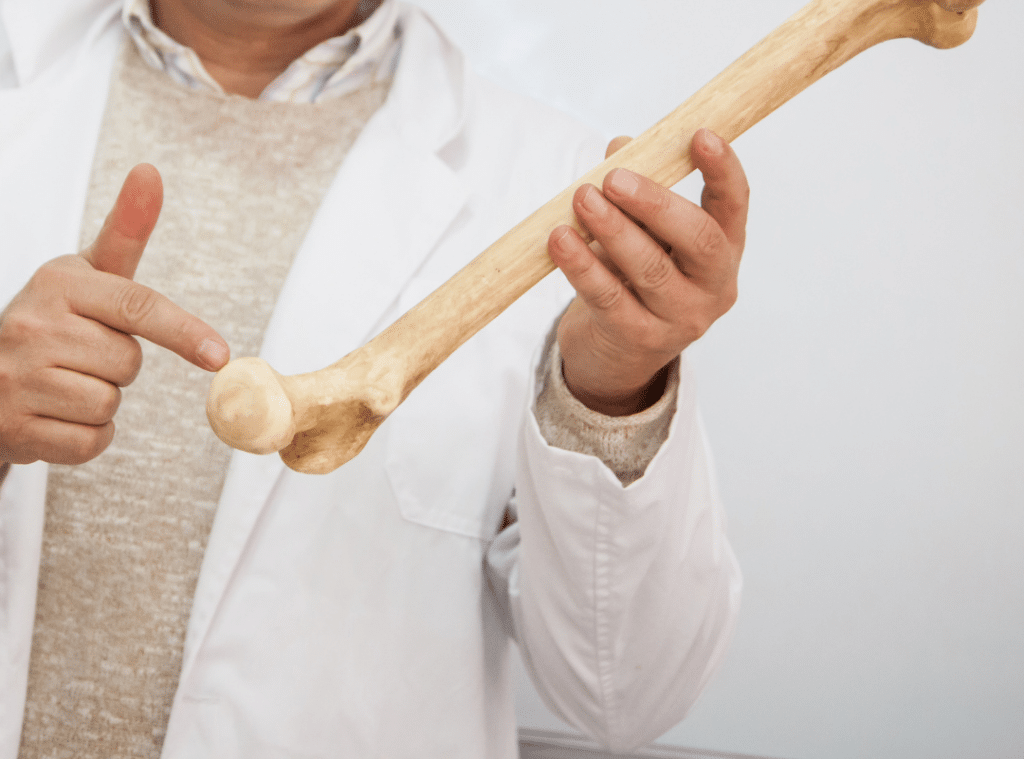
Importance of Bone Health
Maintaining strong bones is essential for preventing serious injuries from falls. You can support your bone health by getting enough calcium and vitamin D and engaging in regular physical activity. Additionally, following a nutrient-dense diet can help promote bone density and reduce the risk of fractures.
Essential Nutrients for Bones
Understanding the essential nutrients for bone health is fundamental for maintaining strength and preventing fractures as you age. Calcium and vitamin D are the cornerstones of bone health. Calcium supports bone density, while vitamin D enhances calcium absorption. Aim for 1,200 mg of calcium and 800-1,000 IU of vitamin D daily.
Don’t forget magnesium and vitamin K, which also play important roles in bone metabolism. Magnesium aids in converting vitamin D into its active form, while vitamin K helps in bone mineralization. Foods rich in these nutrients, like leafy greens, nuts, and fish, should be staples in your diet.
Moreover, protein is essential for muscle mass, which supports your bones. A balanced diet with adequate protein can help you maintain strength and reduce fall risks.
Remember, the consequences of falls in the elderly can be severe, impacting life expectancy after a fall. Focusing on nutrition can greatly enhance the importance of bone health, ultimately promoting your well-being and independence.
Prioritizing these nutrients strengthens your bones and empowers you to live a more active and fulfilling life.
Impact of Physical Activity
Physical activity is essential in maintaining bone health and reducing the risk of falls as you age. Regular exercise strengthens your bones and muscles, which can greatly lower the chances of experiencing falls in the elderly.
By engaging in physical activity, you not only enhance your strength but also improve your balance and coordination.
To support your bone health, consider these key aspects of physical activity:
- Weight-bearing exercises like walking or dancing help build bone density.
- Strength training can increase muscle mass, providing better support for your bones.
- Balance exercises such as tai chi or yoga improve stability, reducing fall risks.
Strategies for Bone Strength
Building on regular physical activity and strengthening your bones is vital for preventing injuries as you age. Healthy bones notably reduce the risk of serious injuries from falls, which can lead to hospital stays or long-term disability.
To enhance bone strength, ensure you’re getting enough calcium and vitamin D. Aim for a daily intake of 1,200 mg and 800-1,000 IU of vitamin D.
Incorporate weight-bearing exercises, like walking, dancing, or strength training, into your routine—aim for at least 150 minutes of moderate activity each week. Balance training activities, such as yoga or tai chi, can also improve stability and reduce fall risk.
Maintaining a healthy weight is essential, too, as underweight individuals face higher fracture risks.
Lastly, be proactive about your health by scheduling regular check-ups with your healthcare provider. Discuss your bone health and any medications that might affect it.
Strategies for Fall Prevention
To effectively prevent falls, you should consider strategies that focus on home safety modifications, exercise and balance training, and medication review.
You can greatly reduce your risk of falling by creating a safer living environment, strengthening your body, and managing your medications. Additionally, addressing weak legs is crucial to maintaining independence and quality of life for elderly adults, as it can significantly impact mobility and increase the risk of falls.
These proactive steps not only enhance your safety but also promote overall well-being.
Home Safety Modifications
Many falls among seniors occur at home, making safety modifications vital for preventing these incidents. By making your home safer, you can markedly reduce the risk of falls and keep your loved ones secure.
Here are three key modifications to take into account:
- Remove Clutter: Keep hallways and rooms free of obstacles to prevent tripping. Ascertain that electrical cords and furniture don’t obstruct pathways.
- Install Handrails: To provide extra support, place sturdy handrails on both sides of stairways and in bathrooms, particularly near tubs and toilets.
- Improve Lighting: Verify that all areas of the home are well-lit, particularly staircases and hallways. Consider using night lights to illuminate paths at night.
These modifications not only enhance safety but also foster independence for seniors.
Assess the home environment regularly and address potential hazards. By taking these proactive steps, you’re helping create a safer space, allowing your loved ones to thrive in their own homes while minimizing the risk of falls.
Exercise and Balance Training
Incorporating regular exercise and balance training into your routine can greatly reduce the risk of falls among seniors. Physical activities strengthen muscles, improve flexibility, and enhance coordination, all essential for maintaining stability. Aim for at least 150 minutes of moderate weekly exercise, including walking, swimming, or cycling.
Balance training exercises like yoga and tai chi can be particularly beneficial. These practices enhance physical strength and promote mental focus and body awareness, helping you navigate your environment more safely.
Encourage participation in group classes or community programs that focus on exercise for seniors. These settings foster social connections and provide motivation.
Additionally, incorporating simple exercises at home, like leg lifts or heel-to-toe walks, can further boost balance and strength.
Always consult with a healthcare provider before starting any new exercise program, especially if there are existing health concerns.
Medication Review and Management
Many seniors take multiple medications, which can increase the risk of falls due to potential side effects like dizziness or confusion.
Regularly reviewing medications with a healthcare provider can help identify any drugs that may impair balance or cognitive function.
Here are some key strategies to effectively manage medications for fall prevention:
- Discuss all medications: Share all prescribed and over-the-counter medications with your doctor, including supplements.
- Monitor side effects: Keep track of any side effects you experience and communicate them to your healthcare provider.
- Simplify regimens: Ask your provider if reducing the number of medications or switching to alternatives with fewer side effects is possible.
Actions After a Fall
After a fall, it’s vital to stay calm and take a moment to assess your situation.
Take deep breaths to help you regain your composure. Check yourself for any injuries, focusing on pain or discomfort in your wrists, arms, ankles, or hips. If you feel any serious pain, staying put and calling for help is important.
If you can, crawl to a sturdy chair or a wall for support. The chair can assist you in standing up safely.
If you can’t rise or feel uncertain, don’t hesitate to ask for assistance from a family member or neighbor. It’s necessary to seek medical evaluation, even if you feel fine initially, as some injuries, like head trauma or fractures, may not be immediately apparent.
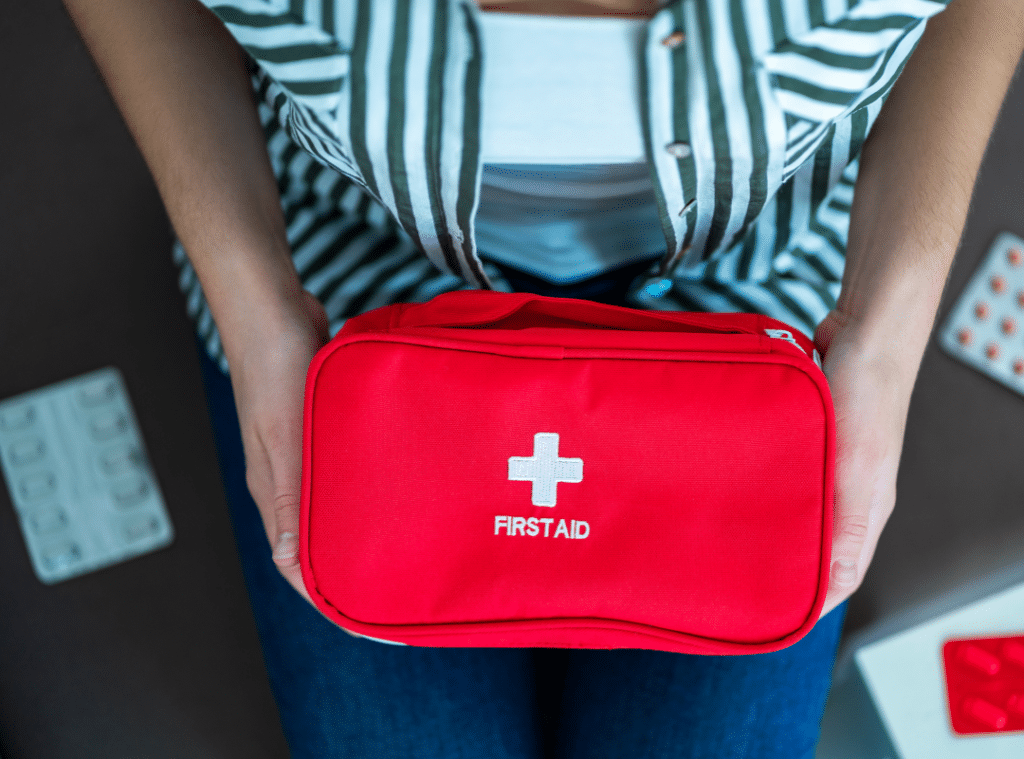
Home Safety Modifications
Home safety modifications are essential for reducing the risk of falls among seniors. Simple changes in the home environment can greatly enhance safety and accessibility.
Start by evaluating the areas where your loved ones spend the most time.
Here are three key modifications to take into account:
- Remove Clutter: To minimize tripping hazards, keep floors clear of items like shoes, magazines, and electrical cords.
- Install Grab Bars: Place grab bars in bathrooms near toilets and tubs to provide support when getting in and out, reducing the chance of slipping.
- Improve Lighting: Verify all areas are well-lit, especially stairways and hallways. Think about using night lights to illuminate paths during nighttime trips.
These modifications offer physical safety and promote independence, allowing seniors to feel more secure in their own homes.
Remember, each small change can significantly improve the prevention of falls and the quality of life for your loved ones.
Taking the time to assess and implement these adjustments shows your commitment to their well-being.
Helpful Resources
Making home safety modifications is just one step in guaranteeing the well-being of seniors at risk of falls. You can further support them by utilizing a variety of helpful resources. The CDC offers the STEADI program, which provides valuable information on fall prevention strategies tailored for older adults. It’s an excellent starting point for understanding the risks and how to mitigate them.
The National Falls Prevention Resource Center also offers resources, support, and educational materials to help caregivers like you. This can empower you with knowledge of how to implement effective fall-prevention tactics.
Remember local organizations like Rebuilding Together, which focuses on home safety improvements. They can assist in making necessary modifications to guarantee a safer living environment.
Lastly, regular check-ups should be considered for seniors to assess their vision and balance. These visits can help identify any areas of concern that may increase their risk of falling.
In the aging journey, consider fall prevention a sturdy handrail on a winding staircase. It’s there to support you and guide you safely. By focusing on strength, balance, and home safety, you can greatly reduce the risk of falls. Remember, just as you wouldn’t set out on a hike without checking your gear, taking proactive steps in your daily life can keep you secure and enjoying every moment to the fullest.
At Westmont of Culver City, we are dedicated to ensuring your safety and well-being. If you have any questions or need assistance, please don’t hesitate to call us at 310-736-4118. Stay safe and steady!
Discover the level of care you or your family member requires. What Level of Care Do You Need?
Frequently Asked on Questions on Falls in the Elderly
1. What is the most common cause of falls in the elderly?
The most common cause of falls in the elderly is a combination of physical factors like muscle weakness, balance issues, and chronic health conditions such as arthritis or Parkinson’s disease. Environmental hazards like uneven flooring, poor lighting, and clutter can also increase the risk of falling.
2. How long does it take for the elderly to recover from a fall?
Recovery time after a fall varies depending on the severity of the injuries and the individual’s overall health. Minor injuries may heal in a few weeks, while more serious ones like fractures can take months, particularly if surgery or rehabilitation is required.
3. How do you know if you are okay after a fall?
After a fall, check for pain, swelling, or difficulty moving to identify potential injuries. If there’s dizziness, confusion, or any loss of consciousness, it’s important to seek medical attention immediately to rule out head injuries or other serious complications.
4. Why does my 82-year-old keep falling?
Frequent falls in elderly individuals can result from a mix of age-related physical changes, underlying medical conditions like vision problems or neuropathy, and side effects of medications that affect balance or coordination. It’s crucial to evaluate their health, medications, and living environment to identify and address potential causes.
5. How can you prevent falls in the elderly?
Preventing falls in the elderly involves maintaining physical activity to strengthen muscles and improve balance, managing chronic health conditions, and reviewing medications for side effects. Additionally, making home modifications such as removing tripping hazards, installing grab bars, and ensuring adequate lighting can significantly reduce fall risk.




